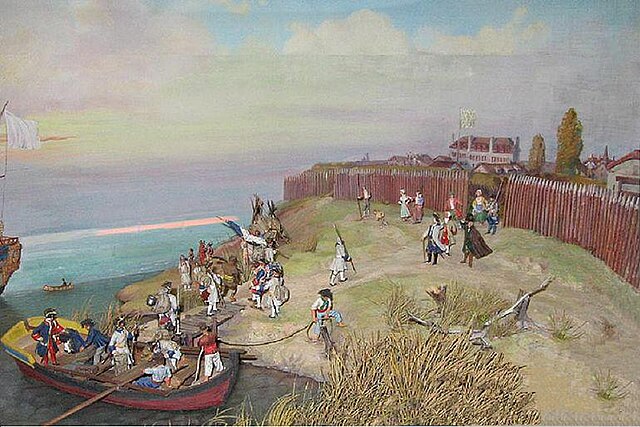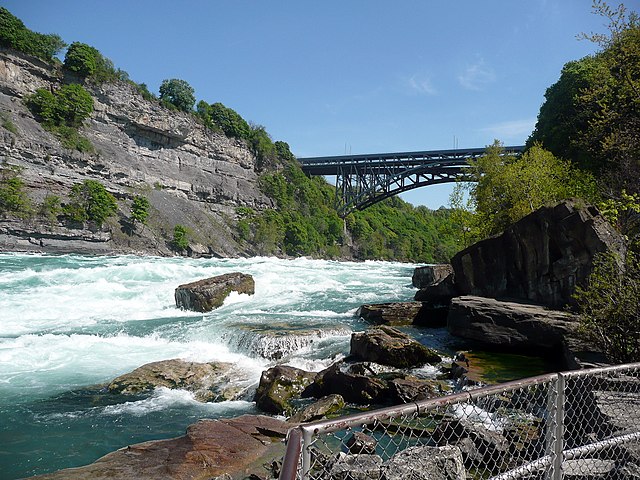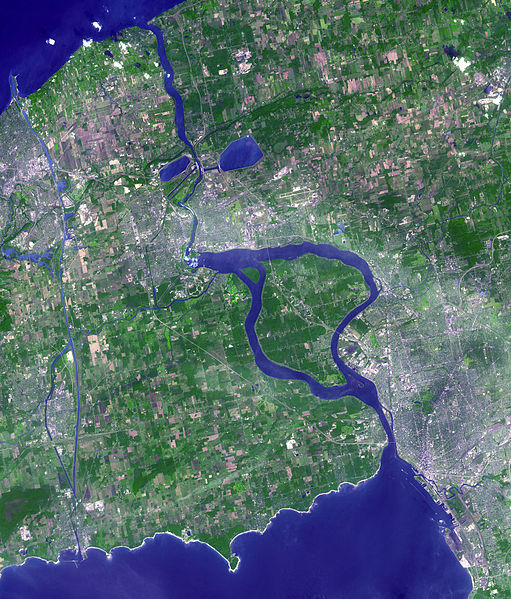Fort Niagara, also known as Old Fort Niagara, is a fortification originally built by New France to protect its interests in North America, specifically control of access between the Niagara River and Lake Ontario, the easternmost of the Great Lakes. The fort is on the river's eastern bank at its mouth on Lake Ontario. Youngstown, New York, later developed nearby.
View of French Castle at Fort Niagara
Fort Niagara 1728
Overlooking Fort Niagara, [ca. 1915]
Porte des Cinq Nations. Beginning in 1756, the main entrance to Fort Niagara was established at the southern bastion, on the side of the Niagara River. The French named this gate the Porte des Cinq Nations, that is, the Gate of the Five Nations, in honor of the Iroquois League.
The Niagara River flows north from Lake Erie to Lake Ontario, forming part of the border between Ontario, Canada, to the west, and New York, United States, to the east. The origin of the river's name is debated. Iroquoian scholar Bruce Trigger suggests it is derived from a branch of the local Neutral Confederacy, referred to as the Niagagarega people on several late-17th-century French maps. George R. Stewart posits that it comes from an Iroquois town named Ongniaahra, meaning "point of land cut in two."
The Niagara River at Niagara Gorge in May 2008
Satellite image of Niagara River flowing north from Lake Erie (bottom) to Lake Ontario (top). The river flows around Grand Island, and then flows over Niagara Falls. It narrows in the Niagara Gorge, where two hydropower reservoirs are visible, and then widens after exiting the gorge. The Welland Canal is visible on the far left.
American Falls with Goat Island to its right
Niagara River at Queenston, Ontario, then known as Queenstown, Upper Canada, c. 1805 watercolour



![Overlooking Fort Niagara, [ca. 1915]](https://upload.wikimedia.org/wikipedia/commons/thumb/7/7c/Overlooking_Fort_Niagara_%28I0004210%29.jpg/640px-Overlooking_Fort_Niagara_%28I0004210%29.jpg)




